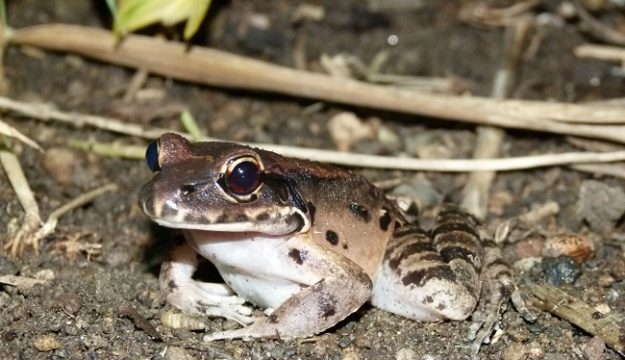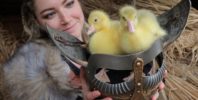 Mountain Chicken ©Ben Tapley ZSL
Mountain Chicken ©Ben Tapley ZSL
London Zoo unveils the mysterious world of reptiles and amphibians with brand new experience – opening Easter 2024
Get to know the planet’s most mysterious creatures this Easter at London Zoo, as the world-famous conservation zoo unveils a brand-new experience – the Secret Life of Reptiles and Amphibians.
Home to some of the planet’s most fascinating yet threatened species – including one of the world’s largest frogs, jewel-coloured geckos, and turtles with heads so big they cannot fit in their shells – Secret Life of Reptiles and Amphibians will introduce London Zoo’s visitors to wondrously weird creatures.
Greeted by a beautiful wall-climbing gecko statue upon entering, visitors will first get a glimpse into the Zoo’s specialist breeding and animal care areas, with the ‘behind-the-scenes’ brought to the fore in the new space. As well as putting the zookeepers on show, Secret Life of Reptiles and Amphibians will shine a spotlight on London Zoo’s global conservation efforts for the species they care for – as part of ZSL, a science-driven conservation charity.
Visitors will come nose-to-nose with one of the world’s largest and most threatened frogs – as the breeding group of Critically Endangered mountain chicken frogs at London Zoo will be visible for the first time. The enormous frogs were once widespread across the Caribbean until a killer fungus was introduced to their habitat. A mass mortality event in the early 2000s was discovered – by a team including a ZSL scientist – to have been caused by chytrid fungus, which wiped out more than 90% of their population.
In 2009, conservationists from London Zoo and other zoos airlifted the last few mountain chicken frogs to safety in a last-ditch attempt to save the species from extinction. A special unit was built, and an animal breeding programme was established. Still, until now, both the frogs and the incredible work being done behind the scenes to save them have been unseen by the conservation Zoo’s visitors.
Visitors can get the chance to delve into ZSL’s vast scientific research by swabbing a frog to test for chytrid with a replica lab kit outside the frogs’ home.
Secret Life of Reptiles and Amphibians has been meticulously designed to meet every need of its inhabitants – with each of its 33 species having individual and very precise requirements for temperature, humidity, water quality and lighting. The custom-built facility features 11 different climate-controlled zones and more than 50 aquatic systems, and the Zoo’s specialist horticulture team has carefully planted each habitat to provide shade, egg-laying sites, basking locations and camouflage areas for the very particular residents.
The Zoo’s 1.9 metre long Philippine crocodile may be spotted basking on the banks of, or swimming in, its 30,000-litre pool, while young visitors can board a boat like the ones used by researchers to study the crocs in the wild. The army of mossy frogs will test even the most ardent of ‘Where’s Wally’?’ fans as they demonstrate their unparalleled camouflage skills in their leafy home, in contrast to the turquoise gecko, who well and truly stands out from the crowd with its electric-blue skin.
Stunning Mangshan vipers and a striking King Cobra have tree trunks to coil around and leaves to shelter beneath, while the big-headed turtles will be keeping an eye on it all – because, as their name suggests, their shells provide no shelter for their supersized skulls.
A shadowy underwater home is hoped to provide the perfect love nest for the Zoo’s pair of Critically Endangered Chinese giant salamanders – the world’s largest amphibians, they are sometimes referred to as ‘living fossils’, as their evolutionary lineage diverged from all other amphibians around 160 million years ago. Largely solitary animals, an invisible divide will give the territorial animals the space they need until they’re in the mood to get together.
Opening for Easter weekend, Secret Life of Reptiles and Amphibians is a must-visit in London. To find out more and book tickets for London Zoo, visit www.londonzoo.org





